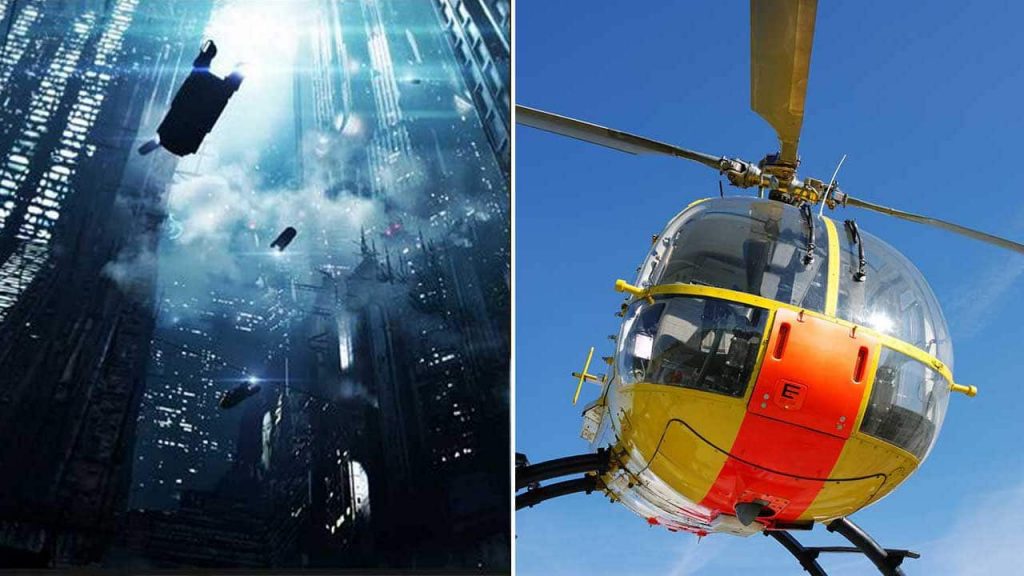
The future is upon us apparently. Excitingly, it is a future Australia or a bit of it will be part of unlike the interminable wait the nation endured for the arrival of colour television.
And why is the future almost here? Because Uber says so.
Melbourne will be the only city outside the US to trial what Uber calls its “on-demand urban aviation”.
The announcement was made on Day One at the Uber Elevate Summit, a two-day “immersive” event in Washington DC.
Day Two kicks off tonight (AEST) with an address from Uber Eats’ Senior Director for Business Development on the future of food delivery. Don’t tell me. It’s pizza by drone, right?
As far as I can tell, speakers at the conference addressed the excitable throng in English but it is not a form of the language many would be familiar with. Hot topics included “altitude airspace interoperability”, “robotically controlled VTOLs” and “customer-obsessed designs for aerial ridesharing”. Stick all that in your Skyport Mobility Hub and smoke it.
The news that the Great Southern City will boldly tag along with Dallas and Los Angeles is a further blow to the status of Sydney, a city whose future, ironically, is set in the past after it determined to reconfigure a latter-day form of the six o’clock swill.
If you rose this morning to see the news of Uber’s shiny new images of what the future will look like, you may have taken to wondering, as I did, why the images of Uber’s flying taxis look they’ve been lifted off The Sims with a bit of The Jetsons hurled in for good measure.
The images we’ve seen of Uber Air VTOLs (vertical and/or short take-off and landing aircraft) are prototypes in sketch, developed on the computers of aeronautical company Embraer. The Brazilian company’s vision for these futuristic, flying, fantabulous contraptions lies in the past, by designing a version of a tiltrotor, that behaves like a helicopter in vertical flight with the rotor tilting forward to become a propeller as flight speed increases.
Boeing is also hard at work developing prototypes as other US aeronautical companies, Bell Aircraft and Karem Aircraft.
Embraer’s tiltrotor model is designed to reduce energy expenditure, either avgas or, as we remain in the prototypical, vertical thrusts driven by electrical power, thus saving travelling costs.

The images of the Embraer prototype are supported by an actual mocked up model but there remains a long way to go to build a craft that is certified to fly. That time period stands at around ten years.
It all seems pretty much like we’re being set up again for the crippling disappointment associated with the flying cars we were promised fifty years ago. Some of us went a step further trying to invent our own at home and suffered compound fractures after falling off the roof. I’m not bitter, just cynical.
The first Uber Air test flights are scheduled to take place in Melbourne next year.
I wouldn’t be so bold as to say I can predict the future, but I think I can at least foresee how the early years of the trial will work.
You can forget about a dystopian Blade Runner image of the future in eternal neon-lit night with rain falling continuously while airborne vehicles dash in and out between monstrous skyscrapers. Although it is Melbourne, so it will probably still be raining.
Here’s what going to happen in the short term. There will be piloted helicopters zooming around Melbourne’s skies which is not really the future at all, more like the present with a quite a bit of the past thrown in. Just more of it. The only difference will be Uber’s much vaunted ride-sharing program which might, possibly, knock the price of a ride on a helicopter down a touch.
Uber Air excitedly tell people that a trip from the Melbourne CBD to Tullamarine Airport by stodgy old road transport can take up to an hour (it’s more like half an hour, really, unless the traffic is really bad) as opposed to a quick ten minute zip through the troposphere.
However, having a highly skilled human being rather than a robot at the controls is one reason among many why the cost of catching an Uber Air taxi will remain prohibitive to all but the most time-strapped, cash-laden executives.
The trial in its early years is essentially not one of bold visions of a shiny new future of urban transport. It will be about testing the limits of existing aviation regulations, where our cities are virtual no-go zones to small craft air traffic.
What we will find, at least in the foreseeable future, is much like Silicon Valley’s attempts to revolutionise ground transport and coming up with ride sharing in a Honda Odyssey, Uber has looked into the future and “invented” the helicopter.
Uber’s vision of the future looks a little bit boring, to be honest.
This column was first published in The Australian on June 12, 2019
